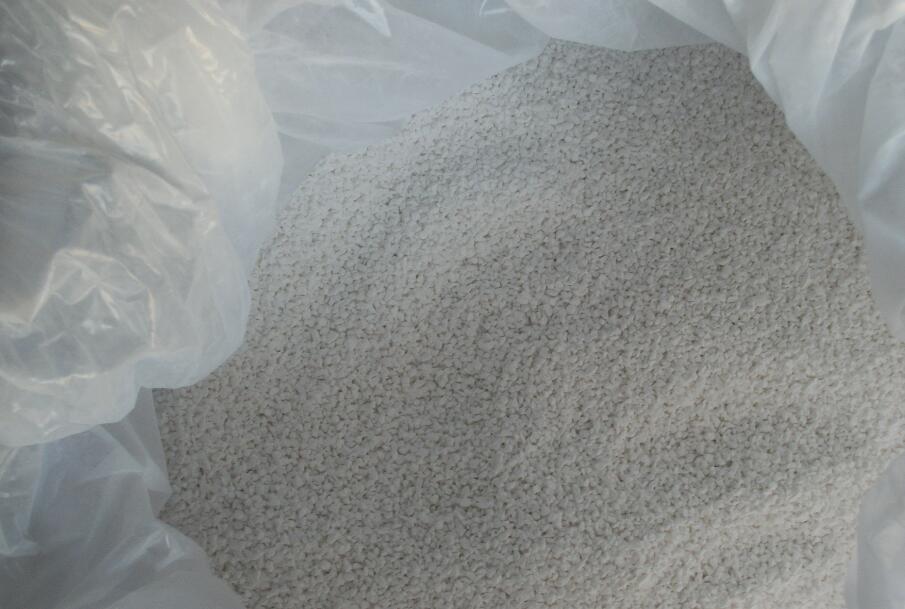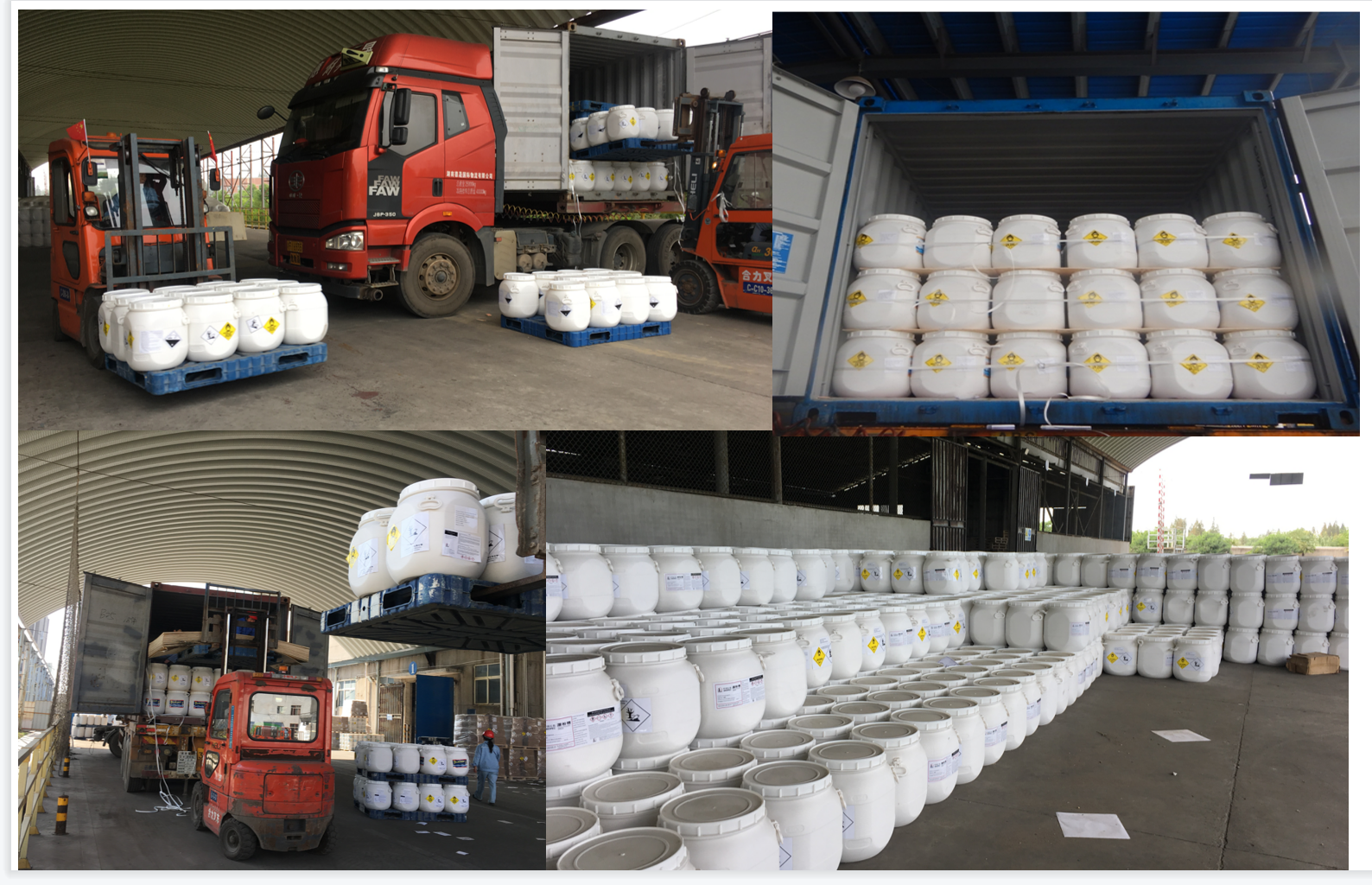About TCCA
Essential information:
White crystalline powder or granular solid, with strong chlorine irritating smell, containing more than 90% effective chlorine, the solubility in water at 25 ℃ is 1.2g, and it is easy to decompose in case of acid or alkali [4].
Trichloroisocyanuric acid is a kind of chloroisocyanuric acid compound, which is an important bleaching agent, chlorinating agent and disinfectant. Compared with traditional chlorination agents (such as liquid chlorine, bleaching powder and bleaching powder concentrate), it has the characteristics of high effective chlorine content, stable storage and transportation, convenient molding and use, high sterilization and bleaching power, long time to release effective chlorine in water, safety and non-toxic, etc. Therefore, its development and research have attracted the attention of all countries. Trichloroisocyanuric acid is widely used as a bactericide for industrial water, swimming pool water, hospital, tableware, etc. It has a broad prospect of development and utilization. Trichloroisocyanuric acid has been widely used in industrial circulating water.

Disinfection and sterilization:
Trichloroisocyanuric acid is a highly effective disinfectant bleach with stable storage, convenient and safe use. It is widely used in food processing, drinking water disinfection, sericulture and rice seed disinfection. It has a killing effect on almost all fungi, bacteria and virus spores, has a special effect on killing hepatitis A and hepatitis B viruses, and has a good disinfection effect on sexual viruses and HIV. It is safe and convenient to use. Now it has been used as a disinfectant in industrial water, swimming pool water, cleaning agent, hospital, tableware, etc.; it is used as a disinfectant in silkworm breeding and other breeding. Trichloroisocyanuric acid is not only widely used as disinfectant and bactericide, but also widely used in industrial production.
Application in printing and dyeing industry:
Trichloroisocyanuric acid contains up to 90% active chlorine. It is used as a bleaching agent in the printing and dyeing industry and is suitable for bleaching of cotton, linen, wool, synthetic fibers and blended fibers. It not only does not damage the fiber, but also has better performance than sodium hypochlorite and bleach. It can also replace imported sodium hypochlorite.
Application in food industry:
Instead of chloramine T for food disinfection, its effective chlorine content is three times that of chloramine T. It can also be used as decolorizing and deodorizing agent of dextrin.
Application in wool textile industry:
It is used as wool shrinkproof agent in wool textile industry to replace potassium bromate.
Application in rubber industry:
It is used as chlorination agent in rubber industry.
Used as industrial oxidant:
The oxidation reduction electrode potential of trichloroisocyanuric acid is equivalent to hypochlorite, which can replace hypochlorite as a high-quality oxidant.
other aspects:
It is used as a raw material in the organic synthesis industry to synthesize a variety of organic substances such as tri (2-hydroxyethyl) isocyanurate. Cyanuric acid, the product of trichloroisocyanuric acid decomposition, is not only non-toxic, but also has many uses, such as producing a series of resins, coatings, adhesives, plastics.
Editing of storage and transportation matters
⑴ Product storage: The product should be stored in a cool, dry and well ventilated warehouse, which is damp proof, waterproof, waterproof, fireproof, and isolated from fire and heat sources. It is prohibited to mix with flammable, explosive, spontaneous combustion and explosion and other substances. It is not allowed to mix with oxidants, reducing agents, chlorinated and oxide substances. It is absolutely prohibited to mix with liquid ammonia, ammonia, ammonium carbonate, ammonium sulfate, ammonium chloride urea and other substances containing ammonia, ammonium chloride Inorganic salts and organics of amines are mixed and placed together, otherwise they are easy to explode or burn. Do not contact with non-ionic surfactants, otherwise they are easy to burn.
(2) Product transportation: The product can be transported by train, automobile, ship and other means of transportation. During shipment, the package shall be protected from breakage, fire, water and moisture. It shall not be mixed with ammonia, ammonia water, ammonium salt, amide, urea, oxidant, non-ionic surfactant, flammable, explosive and other dangerous goods.
(3) Fire fighting: trichloroisocyanuric acid is not self igniting and flammable. It is easy to burn and explode when mixed with ammonium, ammonia and amine. At the same time, the substance is decomposed and emits harmful gas due to the impact of fire. Therefore, in case of fire, firefighters must wear gas masks, work clothes and put out the fire in the windhead. Because it will generate a large amount of harmful gas when meeting water, fire sand is generally used to put out the fire.

Edit using method
1. Disinfection of drinking water: add 0.4 g per 100 kg of water, stir well and let stand for a period of time.
2. Swimming pool disinfection: put 3~5g per cubic meter into the swimming pool every day.
3. Industrial circulating cooling
Treatment of waste water: 0.5 g is added for every 1 m3 of water, the concentration of free chlorine in cooling water is generally controlled between 0.25 and 0.5 ppm, and the pH value is 7 to 8.
4. Others:
(1) Disinfection of tableware. Add 0.25g of water every 5kg and soak the washed tableware for 5min.
(2) Sewage and feces treatment. Add 5g of sewage or feces per cubic meter to eliminate the odor.
(3) Sterilization and disinfection of seeds. TCCA can break the dormancy period of seeds, improve the germination rate of seeds, and inhibit the occurrence of diseases. It is also important that TCCA does not cause environmental pollution and is harmless to humans and animals. The method is to immerse the seeds in 0.2% TCCA aqueous solution for 12 hours.
(4) Sterilization and disinfection of breeding industry.
(5) It is used for disinfection of hospital sewage, diapers, urinals, medicine bowls and instruments. Compared with the commonly used bromogeramine, carbolic acid, chlorhexidine and chloramine T, the amount of TCCA used for the same disinfection object is only 1/10~1/100 of the above conventional disinfectants, and the sterilization speed is fast and the effect is good.
(6) It is used as a disinfectant and deodorant for household and public waste. The formula is TCCA 25%, decontamination powder 25~65%, and p-dichlorobenzene 10~15%, which is suitable for disinfection and deodorization of toilet, garbage and sewer.
Now you fully understand TCCA.

